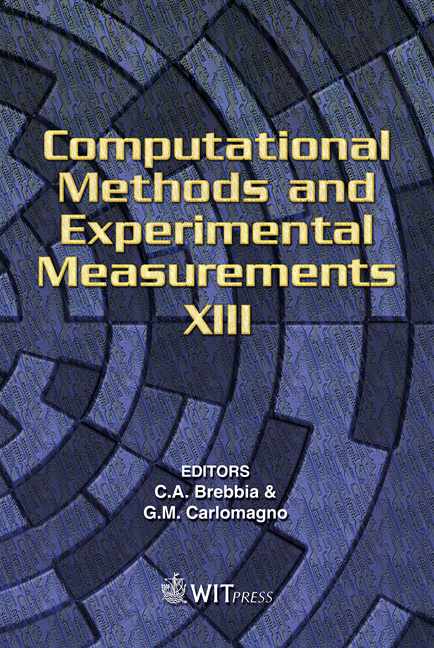An Application Of An Edge Effect Based Vacuum Blower To A Lyophilizer
Price
Free (open access)
Transaction
Volume
46
Pages
10
Published
2007
Size
641 kb
Paper DOI
10.2495/CMEM070161
Copyright
WIT Press
Author(s)
M. Kitamura, M. Tsutahara & H. Sasaki
Abstract
In the rarefied gas, the edge effect flow is induced at a heated edge of a flat plate and its mechanism is well known. Usually edge effect flow is generated at both sides of the flat plate and the effects cancel each other out because the directions of the flows are completely opposite. By rounding the edge of a flat plate at one side we can obtain one-way flow and can use this flow for a vacuum blower. By confirming the characteristic of the effect of this edge effect flow we try to use this flow as an edge effect blower for lyophilizers. We confirmed that there is a pressure difference between the inlet and outlet of this blower caused by this edge effect flow and also this pressure difference is very obvious in the 200–400 Pa range of the surrounding pressure. We set this edge effect blower in a vacuum tank and examined whether this blower could promote the sublimation phenomenon of water. We confirmed that the sublimation was increased by using this blower. We also performed a numerical analysis using the finite difference lattice Boltzmann method to simulate the sublimation phenomena. Gas flows caused by evaporation and condensation phases are simulated. Keywords: rarefied gas, edge effect, lattice Boltzmann method, finite difference method, evaporation, condensation. 1 Introduction We can usually consider the gas to be a continuum and describe a phenomenon by applying the Navier-Stokes equations as the governing equations. However, for low pressure gases, the Navier-Stokes equations and the no-slip boundary condition cannot be applied, because the mean free path of molecules cannot be neglected. We can describe such a gas phenomenon by the Boltzman equation.
Keywords
rarefied gas, edge effect, lattice Boltzmann method, finite difference method, evaporation, condensation.





